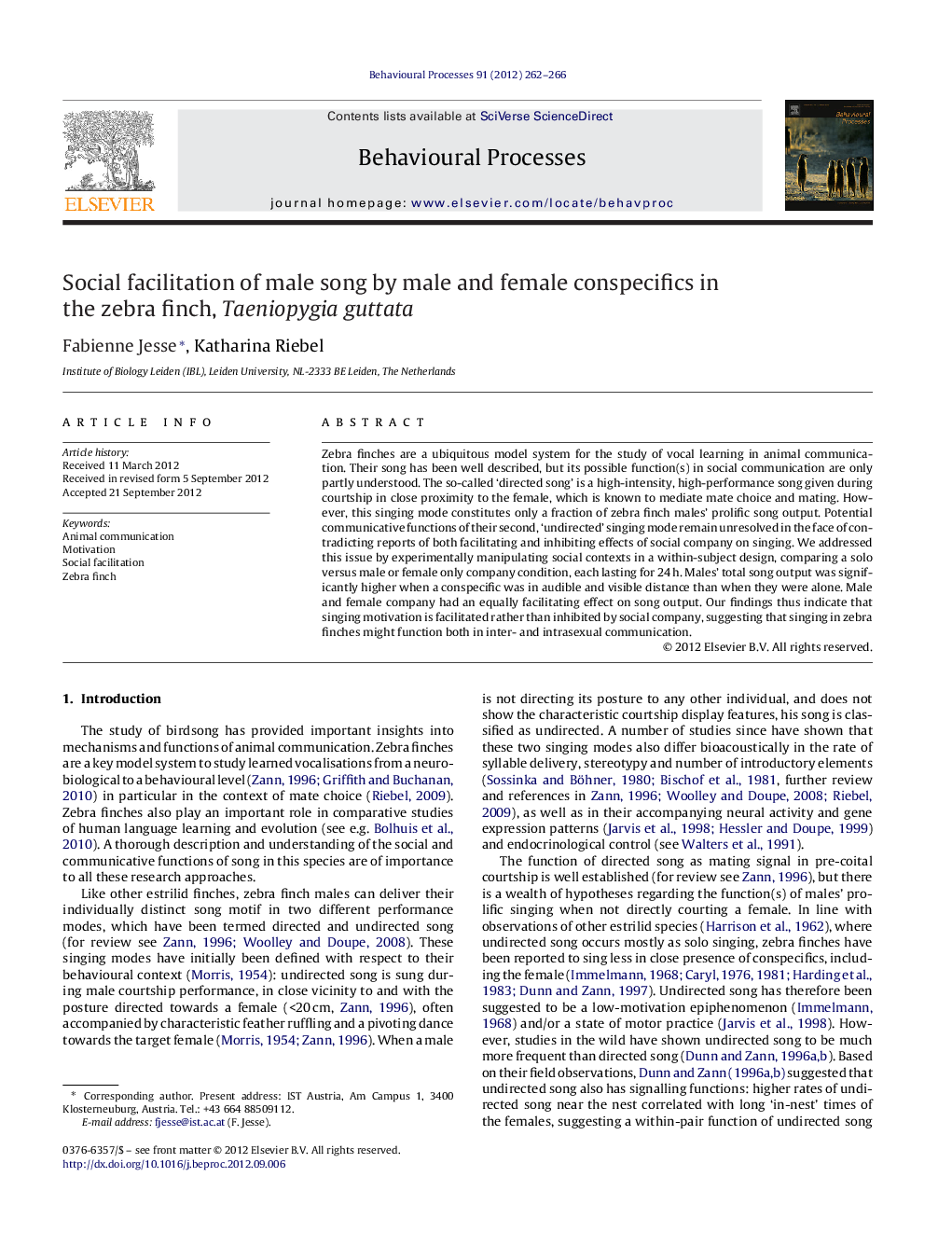| Article ID | Journal | Published Year | Pages | File Type |
|---|---|---|---|---|
| 2426973 | Behavioural Processes | 2012 | 5 Pages |
Zebra finches are a ubiquitous model system for the study of vocal learning in animal communication. Their song has been well described, but its possible function(s) in social communication are only partly understood. The so-called ‘directed song’ is a high-intensity, high-performance song given during courtship in close proximity to the female, which is known to mediate mate choice and mating. However, this singing mode constitutes only a fraction of zebra finch males’ prolific song output. Potential communicative functions of their second, ‘undirected’ singing mode remain unresolved in the face of contradicting reports of both facilitating and inhibiting effects of social company on singing. We addressed this issue by experimentally manipulating social contexts in a within-subject design, comparing a solo versus male or female only company condition, each lasting for 24 h. Males’ total song output was significantly higher when a conspecific was in audible and visible distance than when they were alone. Male and female company had an equally facilitating effect on song output. Our findings thus indicate that singing motivation is facilitated rather than inhibited by social company, suggesting that singing in zebra finches might function both in inter- and intrasexual communication.
► Zebra finch males were recorded for 24 h in three social contexts. ► Song output was measured alone, with a female and with a male each at 1 m distance. ► In company, zebra finch males sang significantly more than without company. ► Male and female company increased singing output to a similar extent.
